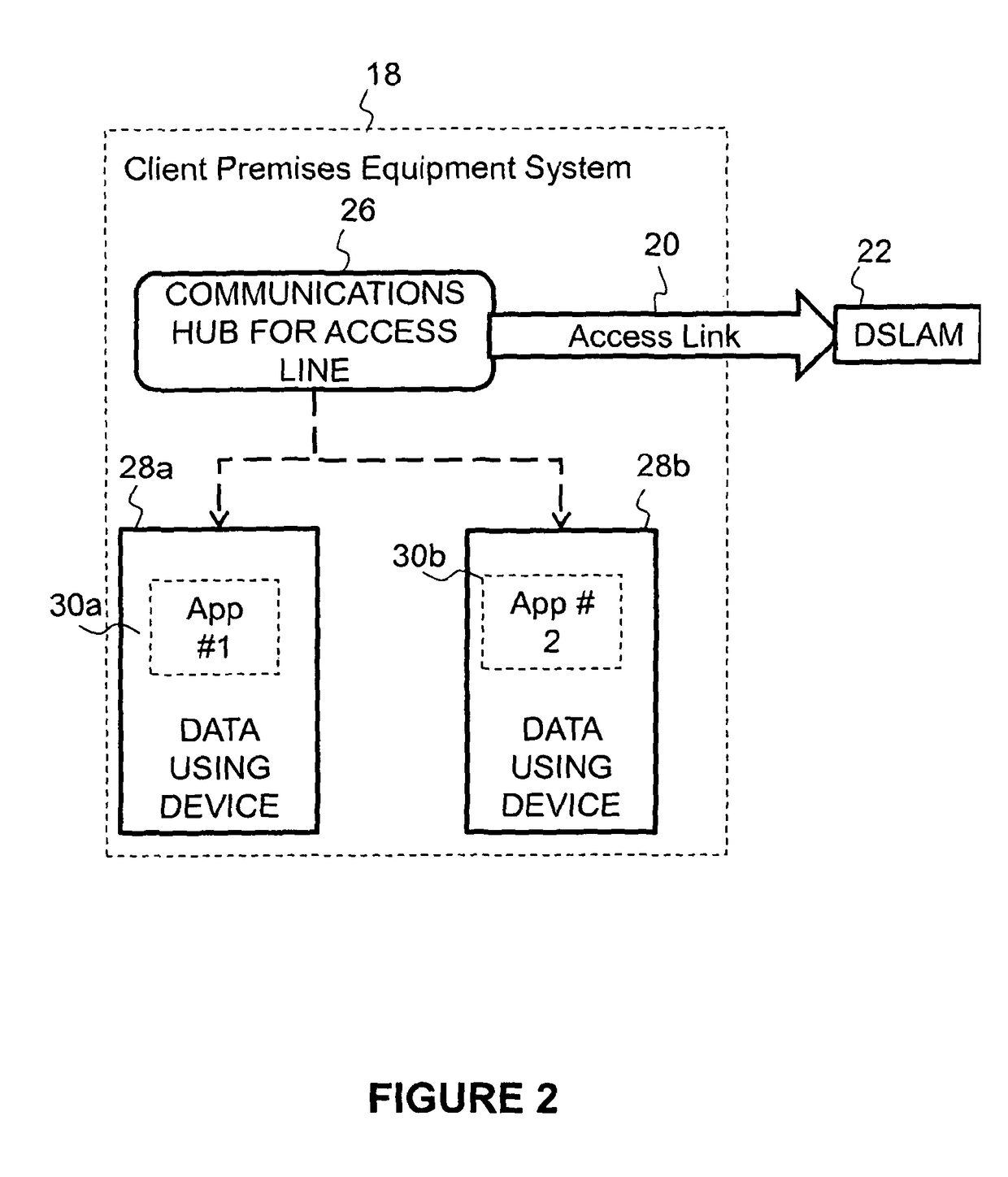Bandwidth management for content delivery
a content delivery and bandwidth management technology, applied in the field of content delivery bandwidth management, can solve the problems of unnecessarily disrupting non-priority traffic, 1.4 mbps would not be able to provide a prioritised delivery of such content to that particular customer, and achieve the effect of preventing undue abus
- Summary
- Abstract
- Description
- Claims
- Application Information
AI Technical Summary
Benefits of technology
Problems solved by technology
Method used
Image
Examples
Embodiment Construction
[0055]The best mode of the invention currently contemplated by the inventor will now be described with reference to the accompanying drawings, in which like numbers are used in the numbering scheme to identify like elements.
[0056]A content distribution system will now be described in which an embodiment of the invention is implemented to manage how the delivery service uses bandwidth over access links 20 in a communications access network connecting customer premises equipment (CPE) 18 to a DSLAM 22. The invention provides a method of adjusting the transmission rate cap, the maximum bandwidth prioritised traffic can utilise at any given time for an individual traffic stream, dependent on the access link being used to stream the traffic to the customer premises equipment which will use the data being streamed.
[0057]The invention seeks to enable bandwidth to be managed during streamed data transmissions so that independent of the relevant data requested each customer will experience t...
PUM
 Login to View More
Login to View More Abstract
Description
Claims
Application Information
 Login to View More
Login to View More - R&D
- Intellectual Property
- Life Sciences
- Materials
- Tech Scout
- Unparalleled Data Quality
- Higher Quality Content
- 60% Fewer Hallucinations
Browse by: Latest US Patents, China's latest patents, Technical Efficacy Thesaurus, Application Domain, Technology Topic, Popular Technical Reports.
© 2025 PatSnap. All rights reserved.Legal|Privacy policy|Modern Slavery Act Transparency Statement|Sitemap|About US| Contact US: help@patsnap.com



